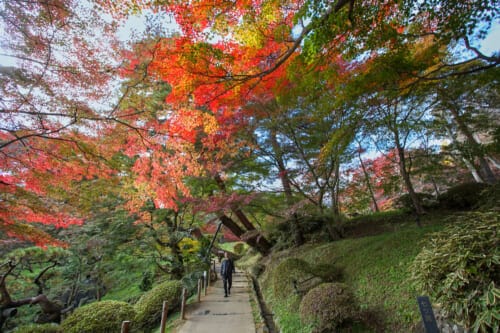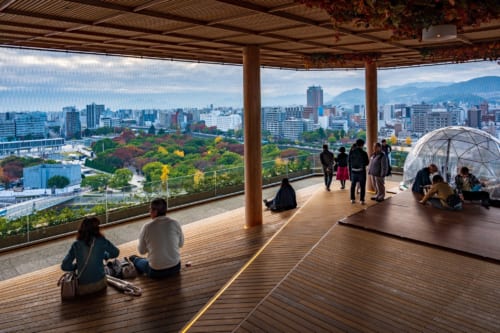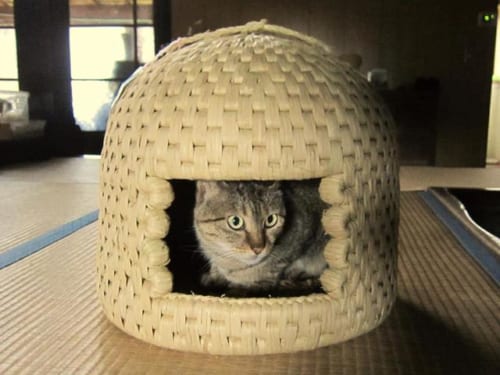Akita Prefecture, located in the northern Tohoku region of Japan, is not only known for its stunning natural beauty and deep and fascinating cultural traditions but also for its culinary distinctiveness. The gastronomy of Akita reflects the prefecture’s agricultural abundance, seasonal ingredients, and the creativity of local food artisans. From street-side delicacies to hearty regional dishes, Akita’s food culture offers a special and flavorful journey for both locals and travelers.
Baba-hera Ice Cream: A Summer Tradition
When summer arrives in Akita, locals and visitors look forward to indulging in a sweet treat known locally as Baba-hera. This unique ice cream, sold by elderly women known as baba (a term of endearment in the local dialect), is a quintessential symbol of summer in this area of the country. The term hera refers to the metal spatula the vendors use to craft the ice cream into beautiful flowers, often resembling a rose or tulip. The ice cream itself comes in bright pink and yellow, flavors that are typically strawberry and banana, served from small mobile stalls stationed along busy roadsides or tourist hotspots.
These vendors are instantly recognizable by the colorful parasols that shield them from the sun, creating a charming and picturesque scene that has become synonymous with Akita’s summer ambience. Baba-hera, however, isn’t solely about the ice cream; it’s about the experience of watching the vendors skillfully create the flower-shaped scoops and the nostalgia it brings to those who grew up enjoying it. The combination of artistry and deliciousness makes Baba-hera a must-try when visiting Akita during the warmer months.
Yokote Yakisoba: A Taste of Tradition
Yokote Yakisoba is another hallmark of Akita’s rich food culture, originating from Yokote City. This beloved noodle dish is distinct from other yakisoba varieties in Japan for its distinctive preparation and flavor profile. The noodles used in Yokote Yakisoba are first boiled, giving them a chewy texture, and are then stir-fried with a mild, savory sauce that is less spicy than other versions. The dish is typically garnished with cabbage, minced pork, and topped with a perfectly fried egg, along with fukujinzuke pickles, which add a slightly sweet and tangy contrast.
What truly elevates Yokote Yakisoba’s status is the annual Yokote Yakisoba Festival, previously known as the Yokote Yakisoba Four Heavenly Kings Championship, a nod to the top four restaurants that have consistently served some of the best versions of the dish. Held every year since 2007, the event celebrates the locally iconic dish and invites visitors to savor the best dishes from restaurants like Steak House Sfida, Roku Sai Tei, Fujiharu Shokudo, and Minakita Tei. In 2024, the festival took place on September 28 and 29, which offered a great opportunity for food lovers to indulge in this regional specialty.
Honjo Ham Fry: A Soul Food Staple
In Yurihonjo City, one of Akita’s most adored dishes is the Honjo Ham Fry. This crispy, deep-fried delight is made from 100% locally sourced pork, enveloped in a golden batter fried in lard for extra crunch and flavor. Honjo Ham Fry is served with a special soy sauce called Honjozo soy sauce, made from local ingredients, enhancing the dish’s savory richness.
Adored by both young and old, Honjo Ham Fry is not just a popular side dish but also a common snack for school children, reflecting the deep connection between the dish and the local community. The simple, yet satisfying nature makes it a symbol of home for many in Yurihonjo City, and it remains a must-try for anyone exploring Akita’s culinary history.
Jyumonji Ramen: A Regional Ramen Delight
In the Jyumonji area of Yokote City, a different kind of noodle dish reigns supreme — Jyumonji Ramen. Known locally as Jyumonji Chinese Soba, this ramen is renowned for its light yet flavorful soy sauce broth. The base of the soup is a balanced blend of dried sardines and bonito flakes, creating a rich umami taste that pairs perfectly with the thin, curly noodles, which are made without Kansui, a common ingredient used in many ramen noodles. This gives the noodles a distinctive texture that sets them apart from other ramen.
Jyumonji Ramen is typically topped with slices of pork, bamboo shoots, and green onions, though variations can include other ingredients like bran and kamaboko (fish cake). Long-standing ramen establishments like Marutama, Marutake Shokudo, and Nadai Sankaku Soba have been serving up this beloved dish for decades, making them culinary hubs for ramen fans visiting the region.
Aigake Jindai Curry: Marrying Tradition and Modernity
For rice lovers, Akita’s fertile lands are a paradise. The region is renowned for producing some of Japan’s finest rice, particularly the Akita Komachi variety. In Semboku City, an area acclaimed for organic farming, rice takes center stage in a dish called Aigake Jindai Curry. This meal beautifully marries two distinct styles of curry over a bed of fluffy Akita Komachi rice.
The first is a traditional Japanese-style curry, thickened with flour and curry powder, offering a nostalgic, home-cooked taste. The second is a European-style curry with a rich, demi-glace sauce, providing a more modern and sophisticated flavor. Topped with a soft-boiled egg and Akita’s signature smoked and pickled daikon radish, Iburi Gakko, Aigake Jindai Curry encapsulates the harmony found in many of Akita’s most-loved dishes.
Akita Prefecture’s food culture, then, is a true reflection of its rich natural environment, agricultural heritage, and deep-rooted traditions. Whether it’s the nostalgia of enjoying Baba-hera ice cream on a hot summer’s day, the comfort of Honjo Ham Fry, or the hearty satisfaction of Yokote Yakisoba, Akita’s local dishes offer a delightful exploration of flavors and history. Each dish tells a story, connecting the past with the present, and provides visitors with an unforgettable culinary experience in this beautiful and distinctive region of Japan.
Sponsored by Akita Prefecture.







No Comments yet!